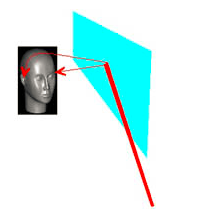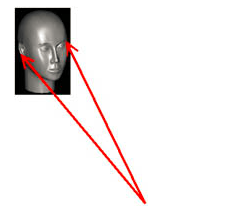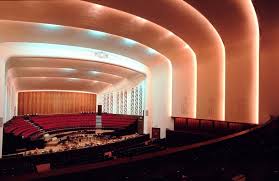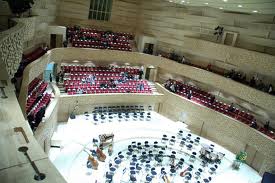The Sound of Music: How Science Can Improve It
by Solomon Starling
Have you ever been to an orchestral concert? The anticipation of a resolution, the excitement of a quick melody, the chills from a particularly compelling section: if you have, then you know exactly what I’m talking about. You know how powerful and moving the musicians make the music, and you know the emotional experience of such an event. If not, I strongly suggest you order your tickets to the next Boston Pops show because you have severely missed out on one of life’s greatest and most beautiful pleasures.
When a listener goes to see an orchestra play, he or she shouldn’t have to strain to hear the dynamic expressions of the instruments. The quality of the orchestra is one factor; more skilled players can better convey specific sounds to the audience. Another, arguably much more important factor that many overlook, is the design of the concert hall. Without a productive design, the musicianship doesn’t matter. The interactions between the acoustics of the concert hall and the listeners’ hearing greatly impacts the overall effect of the music.
When a concert hall is designed and constructed, musicians and engineers are consulted for their expertise in the field, so a great deal of thought, effort and resources is put into the design of the building (especially for top-notch concert halls). Unfortunately, the current way to determine if a concert hall has good acoustics is to examine the energy of the sound and how the room responds at different frequencies (which correspond with different notes). The reason for this method is the acoustic engineers generally think that higher energy means better sound (and in most cases, that is absolutely correct, but we all know that bigger doesn’t necessarily mean better). They don’t take into account where the music goes after it’s reflected of the walls.
Jukka Pätynen, a post-doctoral researcher in the Department of Media Technology at Aalto University, analyzed the acoustics of concert halls while taking into account the reflective characteristics of concert halls. Specifically, they studied the binaural dynamics, which are the lateral (side-to-side) reflections of the music. These are the sounds that “bounce” off the walls of concert halls. These lateral reflections give an intensified harmonic structure of the orchestra; that is, more lateral reflections = better sound.
The pictures may give a little insight to those non-acoustic engineers (and let’s be honest, how many are there, anyway?).
This first picture shows how the sound waves work in a standard concert hall (usually either fan-shaped
or circular/elliptical shaped).
You can see that the waves come straight at the listener. This is because when the sounds hit the walls, they head for the back of the concert halls. Straight back. So if it hits someone, it hits them in the face. Who listens to music with their face? Last time I checked, we listen with our ears.
So given that vital piece of information, the picture below shows what happens with lateral reflections. The sound is bounced back toward the listeners’ ears, so they hear a fuller, more wholesome sound rather than pieces of what hits their face.
 They found that the most effective concert hall design is the shoebox-type design because it maximizes lateral reflections and increased binaural loudness over the spectrum of frequencies. That’s a fancy way of saying more sound hits their ears and less sound hits their faces.
They found that the most effective concert hall design is the shoebox-type design because it maximizes lateral reflections and increased binaural loudness over the spectrum of frequencies. That’s a fancy way of saying more sound hits their ears and less sound hits their faces.
Many architects prefer circular or elliptical (a stretched circle) concert halls because they look nice, which is true, but these focus the noise on one or two areas of the room called hotspots. In contrast, acoustic engineers and owners of concert halls generally prefer fan-shaped halls because it spreads sound really well and you can fit more people into them. Everything is about money.
The shoebox-type design, however, projects the sounds back toward the listeners, so the audience is getting the best sound overall; that is, each spot in the house has about the same acoustic level (unlike the circular halls) and the sound quality and quantity is overall better than any other concert hall design.
Jukka Pätynen, Sakari Tervo, Philip W. Robinson, and Tapio Lokki. Concert halls with strong lateral reflections enhance musical dynamics. Proceedings of The National Academy of Sciences, 2014; DOI: 10.1073/pnas.1319976111
Further reading:
Greater Music Dynamics in Shoebox-Shaped Concert Halls
New Morphable Concert Hall Ceiling Shape Shifts Superb Sound
Music Hall Acoustics


